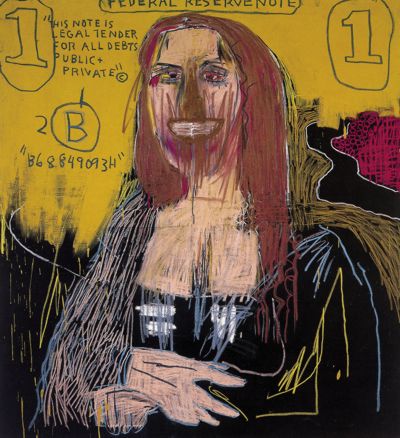v
http://www.youtube-nocookie.com/embed/VmNuOBJ5rgE?list=UUdUDXD1mrBB7XxWn0Njlxfw
Alex Ross
The greatness of Steve Reich is a given. His reputation as a prime originator in contemporary music is more or less etched in stone. In the 1960s and ’70s, he found a rigorous solution to a pressing challenge: how to restore, after a long period of experimentation, the primal pleasures of stable harmony and a steady pulse. Reich did this in a way that was unblinkingly modern, not at all nostalgic or neo-Romantic. Works such as Drumming, Music for 18 Musicians, New York Counterpoint, and You Are (Variations) resonate cleanly through the caverns of the mind, leaving the listener in a state of wide-awake delight. Reich’s influence is vast, reaching far outside classical composition to encompass jazz, rock, pop, electronic music, and hip-hop. On some days, as familiar shimmering patterns echo on the soundtracks of commercials and from the loudspeakers of dance clubs, it seems as though we are living in a world scored by Reich.
In light of the grandeur of his reputation, it is almost disconcerting that the man himself is still so present, writing at full force as he reaches the age of seventy. You can ride the subway to the lower end of Manhattan, emerge onto a street within sight of the Brooklyn Bridge, walk for a minute or two, press a buzzer marked REICH, and, if you are fortunate, hear a crisp voice say “Come on up.” He does not look the part of the musical revolutionist, whatever that might be. With his black button-down shirts and signature baseball cap, he fits the image of an independent film director, a cultural-studies professor, or some other out-in-the-world intellectual. Once he starts speaking, you feel the peculiar velocity of his mind. He is, notably, as much a listener as a talker, although he talks at blistering speed. He reacts swiftly to slight sounds in his midst—the soft buzz of a cell phone, a siren on the street outside, the whistle of a teakettle. Each sound has some information to give him. The windows have thick double panes; even for a listener as omnivorous as Reich, the city gives out too much information.
Steve Reich was born in New York, on October 3, 1936. His parents separated when he was still a baby, and he spent much of his childhood riding trains back and forth to Los Angeles, where his mother, a successful singer and lyricist, had moved. He later said that the clickety-clack of wheels on tracks helped to shape his rhythmic sense. Otherwise, he had a fairly ordinary middle-class upbringing; he absorbed all the humming waves of information that were being given out by America’s culture of postwar prosperity. His formative musical experiences were with recordings, rather than with live performances. In particular, he found himself listening nonstop to Bach’s Brandenburg Concerto No. 5, Stravinsky’s Rite of Spring, and various bebop records featuring the likes of Charlie Parker, Miles Davis, and Kenny Clarke.
Inclined at first toward philosophy, he studied the thought of Ludwig Wittgenstein at Cornell. Then he went to Juilliard for music. Seeking an escape from the East Coast establishment, he moved to San Francisco and enrolled in the music school at Mills College, where the Italian avant-gardist Luciano Berio was a visiting professor in 1961 and 1962. Most of Reich’s early works employed Schoenberg’s twelve-tone method, but there was something grudging about his use of the then-canonical compositional system. He began to hear alternatives in the modal improvisations of John Coltrane, whom he went to hear some fifty times, and also in archival recordings of polyrhythmic African drumming. He also dabbled in San Francisco’s nascent psychedelic culture; he collaborated with one of his fellow students, Phil Lesh, later the bass player of The Grateful Dead, on far-out happenings and prankster spectacles.
In the fall of 1964, Reich participated in the first performance of Terry Riley’s In C, a hypnotic haze of multiple, looping patterns derived from the C-major scale. Phenomena of repetition intrigued him to no end. One day in January, 1965, he was fooling around with tapes of a Pentecostal preacher shouting “It ain’t gonna rain!” when he noticed an interesting effect. Two identical tapes of the preacher’s voice were running in unison, but one machine was playing slightly faster than the other, so that the tapes began to go out of phase: “It’s-s gonna-a rain-n! It’s-‘s gonn-nna rai-in! It’s-t’s gonna-onna rai-ain! It’s-it’s gonna-gonna rain-rain!” Listening on stereo headphones, with one ear tuned to the left machine and the other to the right, Reich had a physical reaction; the sound went down one side of his body and up the other. He generated an electronic composition from this happy accident, entitled It’s Gonna Rain. He then made another, Come Out, based on the voice of Daniel Hamm, one of six African-American boys who were beaten up in a Harlem police precinct house in 1964.
Reich now had a stroke of genius: he translated the going-out-of-phase effect into instrumental music. Piano Phase,for two pianos, uses a repeating pattern made up of the first six notes of the major scale. As the pianists move in and out of sync, a surprisingly eventful and colorful narrative unfolds, replete with modulations, transitions, and climaxes. In this and other pioneering process-driven works, a distinctive personality emerges — lean in form, detached in mood, logical in movement, yet marked by some indefinable mixture of beauty and sadness. The music has a soul of its own, which may fascinate and mystify the composer as much as it does the rest of us.
What came to be called minimalism was unleashed full force in Four Organs, first conceived in August 1969, the month of the Manson murders and the killing of a spectator at a Rolling Stones show in Altamont, California. Explosions of violence had been filling the news: the assassinations of Robert Kennedy and Martin Luther King, Jr., the massacre at My Lai in Vietnam, riots on university campuses and in inner cities. Four Organs is, in its own way, an apocalyptic, end-of-the-world piece: heard at full volume, its electric-organ sound becomes an all-out assault. The entire piece is based on a six-note chord that consists of a D-major triad superimposed on top of an E-major one. As maracas provide a steady pulse, the notes of the chord are prolonged by degrees, so that the harmony rotates this way and that. After many permutations, it finally resolves on a simple open fifth. In a dark time, Reich was finding his way back to a solid center.
In the 1976 masterwork Music for 18 Musicians, pulsating rhythm is balanced by a comparably sophisticated drama of harmony. The piece is almost symphonic in its narrative arc, proceeding from light to dark and back to light again.It is built on a cycle of eleven chords, each of which governs a section from two or seven minutes in length. Early on, bass instruments emphasize a low D, giving the feeling that this is the work’s tonal center and basement level. But in Section V, bass clarinets and clarinets lower the floor from D to C sharp — a crucial alteration in the physical space of the music. The harmony plunges toward C-sharp minor, and rugged six-note figures come burrowing in. A similar change in the weather darkens Section IX, which is almost expressionistic in its stabbing intensity. Only at the end do D- and A-major-ish chords brighten the air.
Reich wrote several more examples of what might be called “grand minimalism,” letting his discoveries resonate within a large frame. In Drumming, he applied lessons that he had learned from studying West African drumming at the University of Ghana. The Desert Music and Tehillim are spacious, dramatic settings of William Carlos Williams and the Hebrew Psalms, respectively. Then, a new project seized Reich’s attention: he worked to erase the boundary between speech and music, by teasing melodies out of the rise and fall of recorded voices. In the 1990s, he produced a pair of video operas with live accompaniment. First came The Cave, which explored the history of the Cave at Hebron and the Biblical stories related to it. Then came Three Tales, which tells three parables of technology run amok: the crash of the German airship Hindenburg, the testing of atomic bombs on Bikini Atoll, and, in a preview of a catastrophe to come, the birth of artificial intelligence and cloning. In recent years, Reich has once again emphasized instrumental writing; in the Triple Quartet and You Are (Variations), classic minimalism is enriched with new harmonic adventures and diversions.
Perhaps the most haunting Reich work to date is Different Trains, which was given its premiere in 1988, by the Kronos Quartet. This was the first piece in which the composer used recorded speech to create melodic lines. It stemmed from the memory of those long railroad journeys of childhood, and also from the adult reflection that if Reich had been a child in Europe in the 1940s his fate might have been different: “As a Jew, I would have had to ride on very different trains.” The electronic component mingles voices of African-American Pullman porters with those of Holocaust survivors and the neutral noise of train whistles. As the string instruments sing along to these memory-shrouded sounds, they don’t tell us what to feel; they set forth a glistening grid, on which we can plot our own emotions. The result is a music of precision and tears.
–Alex Ross, 2006











